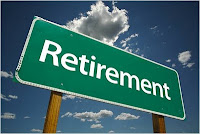Cost of Living "Adjustment"

A couple of weeks back, the Social Security Administration announced that, for the second year in a row—but only for the second time since 1975—there would be no cost of living adjustment (COLA) for Social Security recipients. Of course, this close to an election, it should come as no surprise that some went scurrying to introduce legislation that would provide some kind of supplemental funding to the nation’s seniors; similar actions were undertaken a year ago, ostensibly in the interests of economic stimulus, as well as the importance of supporting those on fixed incomes. But this election year is one unlike most, perhaps any, in our memory—and concerns about the federal budget deficit have, thus far, overcome the political class’s natural inclinations in such matters. Whether or not you are on a fixed income, it’s hard to credibly argue that prices aren’t rising on everything from food to gasoline to utilities; from real estate taxes (those reassessments never come as rapidly when ...



